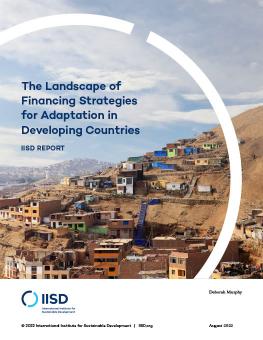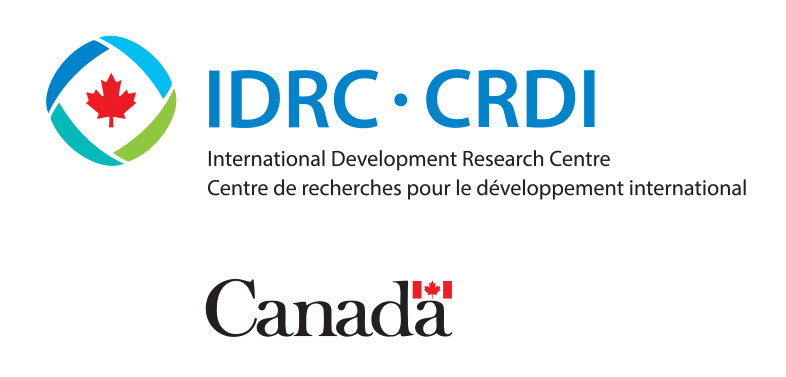
The Landscape of Financing Strategies for Adaptation in Developing Countries
As developing countries increasingly transition from planning to implementation of their National Adaptation Plan (NAP) processes and nationally determined contributions (NDCs), a growing number have prepared or plan to prepare financing strategies for adaptation. These strategies typically set out a nationally coordinated approach to identifying and securing financing for initiatives that advance the country's adaptation priorities. While interest in the preparation of financing strategies for adaptation is growing, there remains uncertainty regarding how these strategies are being developed, the degree of engagement by key actors in their creation (such as multilateral development banks), and their impact on scaling up financing for adaptation. The report provides insights on these issues.
-
The number of financing strategies for adaptation has grown in recent years, and many developing countries are accessing support for their preparation through the Green Climate Fund (GCF). At least 40 countries included the development of an adaptation financing strategy as an expected outcome in their GCF National Adaptation Plan support proposals.
-
The research identified 10 discrete financing strategies for adaptation and 14 general financing strategies for climate action that included an adaptation component which were publicly available as of May 2022.
-
A key benefit of a well-defined financing strategy for adaptation is the clear communication of adaptation priorities that are driven by the needs of developing countries as identified in their National Adaptation Plans and Nationally Determined Contributions
Drawing upon a review of 24 adaptation-focused and broader climate change financing strategies, the report identifies emerging lessons for developing countries and for organizations that provide support to governments with the preparation of these strategies. Countries are taking different approaches to the development and content of their financing strategies for adaptation, depending upon the status of their adaptation planning process and the availability of data and analysis to inform their preparation. Despite these differences, some shared lessons that emerged from the review are:
- Most strategies identify gaps in financing and potential sources of financing, but greater emphasis could be placed on the strategic use of public finance for adaptation, such as domestic finance and international grant and concessional finance, to leverage further investment.
- Strategies could place greater emphasis on needed improvements in the enabling environment to encourage increased private sector investment, as well as on analysis to identify the types of adaptation projects that generate revenue streams that could attract private sector investment.
- It is not clear that a strategy that includes detailed costing of adaptation actions is more effective than a high-level strategy that builds awareness and high-level political buy-in.
- Ministries that lead on adaptation need to be engaged in processes to develop financing strategies for NDCs, the Sustainable Development Goals, national development plans, and COVID-19 pandemic recovery. This would help to ensure that NAP priorities are addressed and aligned with national priorities.
- Ministries of finance and planning, which often have stronger connections with financial actors and development partners, should be engaged in the preparation of financing strategies for adaptation.
- Improved tracking of climate finance at the country level is needed to understand if financing strategies and other adaptation policies are successful in mobilizing investment for adaptation priorities.
- These strategies can help governments take a coordinated and strategic approach to the financing of adaptation that considers the best use of public and grant finance, as well as alignment with related sustainable development goals.
Overall, the report finds that a well-defined financing strategy for adaptation can be critical tool in ensuring that adaptation financing priorities are driven by the climate needs of developing countries and in helping governments to take a coordinated and strategic approach to the financing of adaptation that considers the best use of international and domestic public and private finance.
Participating experts
You might also be interested in
Guiding Principles for the Preparation of Financing Strategies for Climate Change Adaptation in Developing Countries
This report provides seven guiding principles for effective financing strategies for climate change adaptation prepared by developing country governments.
Alignment: A key element of successful financing strategies for climate change adaptation
This brief explores the need for, benefits of, and strategies to align developing countries' financing strategies for adaptation with other national financing strategies.
Innovative Financial Instruments and Their Potential to Finance Climate Change Adaptation in Developing Countries
This report explores the range of innovative financial instruments that could be used to scale up financing for adaptation and lessons for their use in developing countries.
Multilateral Development Bank Efforts to Mainstream Climate Adaptation
The paper explores the progress of four MDBs in mainstreaming climate adaptation in their developing country portfolios, specifically looking at experiences in Kenya, Nepal, and Peru.
